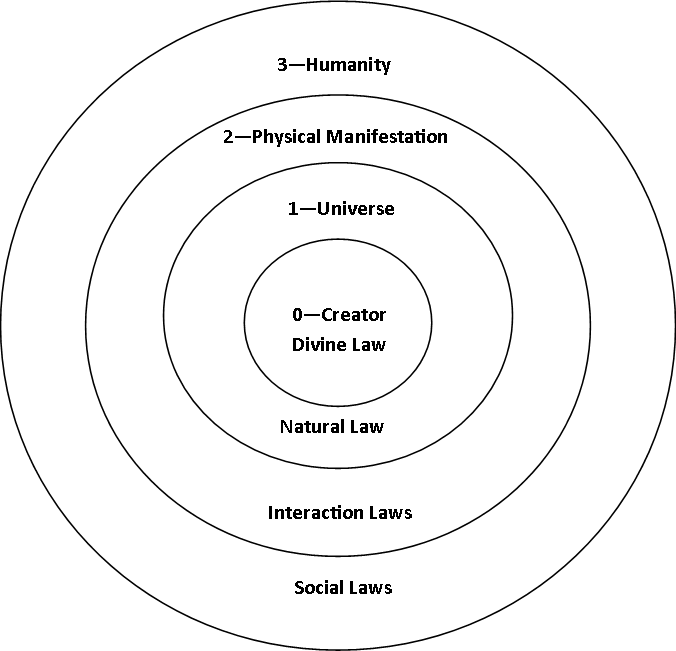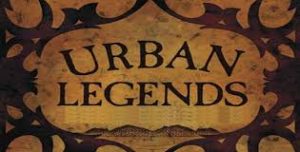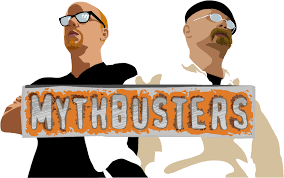The Myth of Mental Illness
“If you talk to God, you are praying; If God talks to you, you have schizophrenia. If the dead talk to you, you are a spiritualist; If you talk to the dead, you are a schizophrenic.” – Thomas Szasz, ‘The Second Sin: Schizophrenia’ (1973)
This quote from Thomas Szasz, a leading psychiatrist and outspoken critic of coercive psychiatry, and summarises society’s attitude towards people with an alleged mental illness.
He went further in his book ‘The Myth of Mental Illness‘, saying that mental illness was created as we moved out of ‘The Age of Faith’ into ‘The Age of Reason (Madness)’ with the rise in power of science as an influence on social thinking.
His work is “based on the principles that each person has the right to bodily and mental self-ownership and the right to be free from violence from others”.
It is beyond the scope of this post to provide enough evidence of the fact that ‘Mental Illness’ is a myth created by society to keep certain members of our society under control. All I can do is provide you with some information to think about and pointers on where to find more information! People under the ‘care’ of our psychiatric services deserve better assistance, not further abuse.
As we have moved out of The Age of Faith, we can no longer torture and burn witches and heretics. In The Age of Reason, we assess them as being deviant and requiring treatment to make them ‘normal’. They are incarcerated in ‘Treatment Facilities’ and given ‘psychotropic drugs’ to stop them from thinking. We label them as ‘Insane’ and strip them of dignity.
Our current model of treatment and care
Psychiatry is a sub-branch of Allopathic Medicine and, as such, is based on the belief that disorders and malfunctions of the human body are caused by a disorder, or imbalance, of the chemistry of the physical form. With this belief structure, psychiatry believes that a person’s thoughts and behaviour are determined by a person’s inner chemistry. In effect this removes responsibility of the person for their behaviour as they have no control over their chemistry and are a victim of the circumstances of heredity. Their DNA inherited from their family determines how they will think, behave and act.
The Diagnostic Statistical Manual (DSM) produced by the American Psychiatric Association, is the ‘Bible’ used by all psychiatric services in the Western World to diagnose and treat ‘Mental Illness’. The DSM is currently in its fifth edition. It started as a guide to physicians when in 1840 a condition was identified and named by southern alienists as ‘Drapetomania’, an inexplicable, mad longing of a slave for freedom. This ‘malady’ has since been recognised as a false diagnosis and removed. By the 1880’s, seven conditions were added including; Mania, Melancholia, Monomania, Paresis, Dementia, Dipsomania and Epilepsy. By 2000, the DSM-IV-TR has 365 conditions recognised as ‘Mental Illnesses’.
The DSM is “a medical classification of disorders”. It defines a mental disorder as; “a syndrome characterized by clinically significant disturbance in an individual’s cognition, emotion regulation, or behavior that reflects a dysfunction in the psychological, biological, or developmental processes underlying mental functioning. Mental disorders are usually associated with significant distress or disability in social, occupational, or other important activities. An expectable or culturally approved response to a common stressor or loss, such as the death of a loved one, is not a mental disorder. Socially deviant behavior (e.g., political, religious, or sexual) and conflicts that are primarily between the individual and society are not mental disorders unless the deviance or conflict results from a dysfunction in the individual, as described above” DSM-V pg-61.
The DSM also determines that these disorders have a classification of disease or illness. This puts these disorders into the realm of having a biological cause. It is believed that imbalances of neuro-transmitters within the brain cause aberrant thoughts and behaviour. It places these conditions into different ‘Axis’.
The main effect that determining ‘mental illness’ has a biological cause and can be treated with pharmacology is that it is no longer a mental illness. When a condition has a physical cause within the brain, it is a Neurological condition and, therefore, falls outside the realm of Psychiatry. A blood test should be able to predict the likelihood of developing the condition and surgery or medication should provide relief, if not, a cure.
So, what is a Mental Illness?
By definition, a mental illness is a condition of the mind that is unhealthy or in a state of disease. It is easy to determine a physical illness because our body ceases to function in a correct way and we experience some loss of function with pain or discomfort as a result. Certain physical markers are able to be detected using blood tests indicating the malfunction.
Does the same definition apply to the mind? When our mind ceases to function in a correct way and we experience some loss of function with pain and discomfort as a result. I would say, “Yes, except there are no blood tests to determine if someone has a mental illness.” If you search online, you will find many ‘promising’ research studies dating back to the 1970’s all with the tag ‘may have found possible links’. But with all of science’s might it has not, and probably will not, be successful in finding a blood test for mental illness.
As to the cause of the malfunction within the mind, I differ markedly from the scientific view. Science would have us believe that errant thinking and behaviour is caused by a genetic predisposition and imbalances of bodily chemistry combined with certain stress factors. For instance, it is believed that Depression is an inherited fault within certain families which causes the levels of serotonin, noradrenaline and dopamine to be out of balance. By giving certain medications these levels can be regulated and symptoms relieved. Once the symptoms are controlled, further work can be done to correct errant thought patterns and better stress management techniques.
While this is good in theory, the application of this process is sometimes deficient. Particularly in the public health system. Often, because it is too costly to provide the ongoing support and treatment, there is too great a reliance placed on pharmacology providing a ‘miracle cure’.
For an explanation of the history of the treatment of depression with drugs like ‘Prozac’, have a look at this article.
In my view, the cause of the imbalance of neurotransmitters is the errant thinking or inner belief that leads to aberrant behaviour. As our minds are the creators of our reality, our minds create the changes in brain chemistry as a result. By giving psychotropic medication we can only ever give symptomatic relief because we haven’t changed the underlying thought, belief or value that the person is acting on. This is the mind-spirit connection that controls the physical form.
A mental illness then is not a physical illness but a disorder of the mind and the spirit.
A Spiritual Crisis
There is no blood test for someone going through a Spiritual Crisis. It is by its very nature an individual experience. No two people experience the same thing.
As an example, I was working in an Acute Admissions Ward within a Psychiatric Hospital as a Psychiatric Nurse. During the evening, it became time to dispense the evening medications. The nurse assisting me and I had been discussing some issues around the efficacy of psychiatry and personal experiences. We came to a patient who had been admitted for treatment for a psychotic condition where he believed aliens were talking to him telling him to do all sorts of bad things. The medication caused him to feel numb and he didn’t care so much about the voices (his report of the effects of the medication).
The nurse and I continued our rounds and our discussion shifted to things spiritual. She began telling me that she heard the voices of ‘Angels’ that guided her through her daily activities. Her face visibly brightened when she spoke of her experiences and she found it joyful.
The difference between the two people’s experiences started me thinking. How is it that two people can have ‘auditory hallucinations’, one positive and the other negative? What is the difference? I concluded that the main difference is how the ‘hallucinations’ were perceived and interpreted. As well as the effect they had on the people’s lives. One helped her to function more successfully, the other meant he lost his job and was homeless. Each person had experienced something, perceived it as being of a certain value and created an explanation as to how and why it happened. Each described a period of great turmoil in their lives when their ‘voices’ first appeared, but each dealt with it differently.
Each person experienced ‘psychotic episodes’, because we all know that aliens and angels don’t exist, right!
In their perception of reality, they do. Who are we to say that they did not, or do not, hear what they say they hear? The fact is that they hear voices telling them things. We call it an hallucination because we don’t hear them. It doesn’t mean they aren’t real.
Is the ability to hear or see things other people can’t a sign of mental illness? Obviously their reality is very different to ours. That does not necessarily make them ill or suffering from a disease. My nursing colleague was euphoric from her experiences and obviously benefited from it.
If we accept that these perceptions are real, then it comes down to how they are interpreted to explain the difference in experience.
In my post on Higher Sense Perception, I used an analogy of a computer representing our brain. A computer has a hard drive that records and stores information much like our physical brain. On the hard drive is stored an operating system and software that controls how the computer functions. Our mind (software) and spirit (operating system) pick up information from the brain (hard disk) and the environment via our physical body (the Human Interface Device; keyboard, touchpad) and acts upon it.
If you are running software that is capable of hearing or seeing inter-dimensionally, is it operating effectively when you hear ‘voices’ or see things that ‘aren’t there’. Or, is it malfunctioning?
Even if the computer is bringing back wrong information due to broken code in the operating system (spirit) or software (mind), why try to fix the hard drive (brain) when it is simply the recorder of information? If the code is broken, fix the code. Oh yes! That takes time and effort. Lets just press the reset button or better yet, install a new operating system and update the software. No need to fix the hard drive unless it is physically damaged!
Our current system for treating ‘mental illness’ is trying to fix a brain that is not broken. When a system of treatment is based on a ‘lie’ and treatment decisions are based on that ‘lie’, an act of violence is the result.
A New Operating System
Anyone who has installed a new Operating System on their computer knows how difficult and time-consuming that can be. When it comes to changing your spiritual operating system, and related mind software, it can take years or decades. But with the right guidance and assistance, it is possible.
Particularly in the public health system, we need a new way of treating people in mental and spiritual crisis that does not use systematic coercive violence to help them regain control over their lives. This shift can only happen when we truly respect our fellow travellers and use methods that do not de-humanise and degrade.
We need to be helping people in mental and spiritual crisis not treating them as a set of symptoms or as if diseased!





